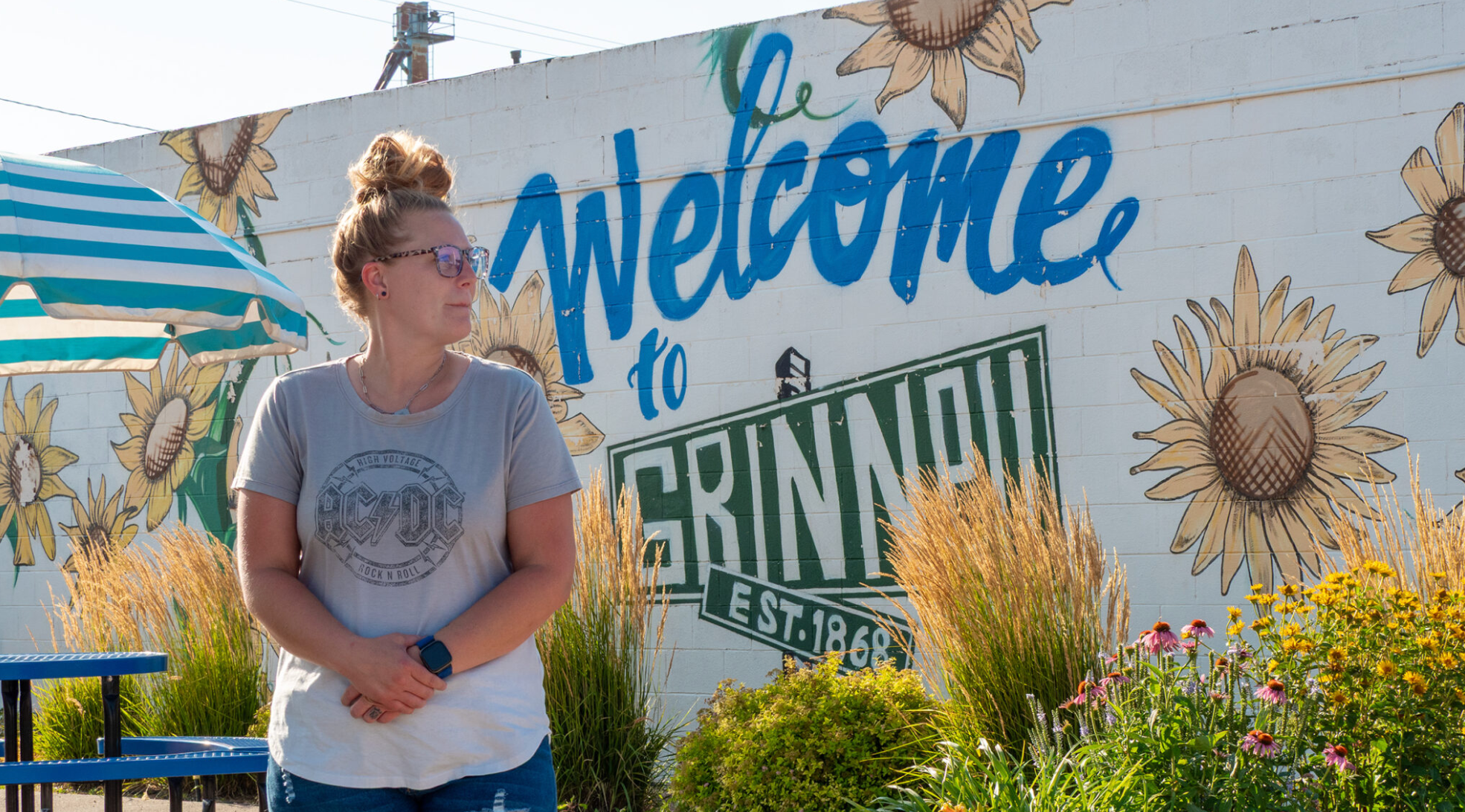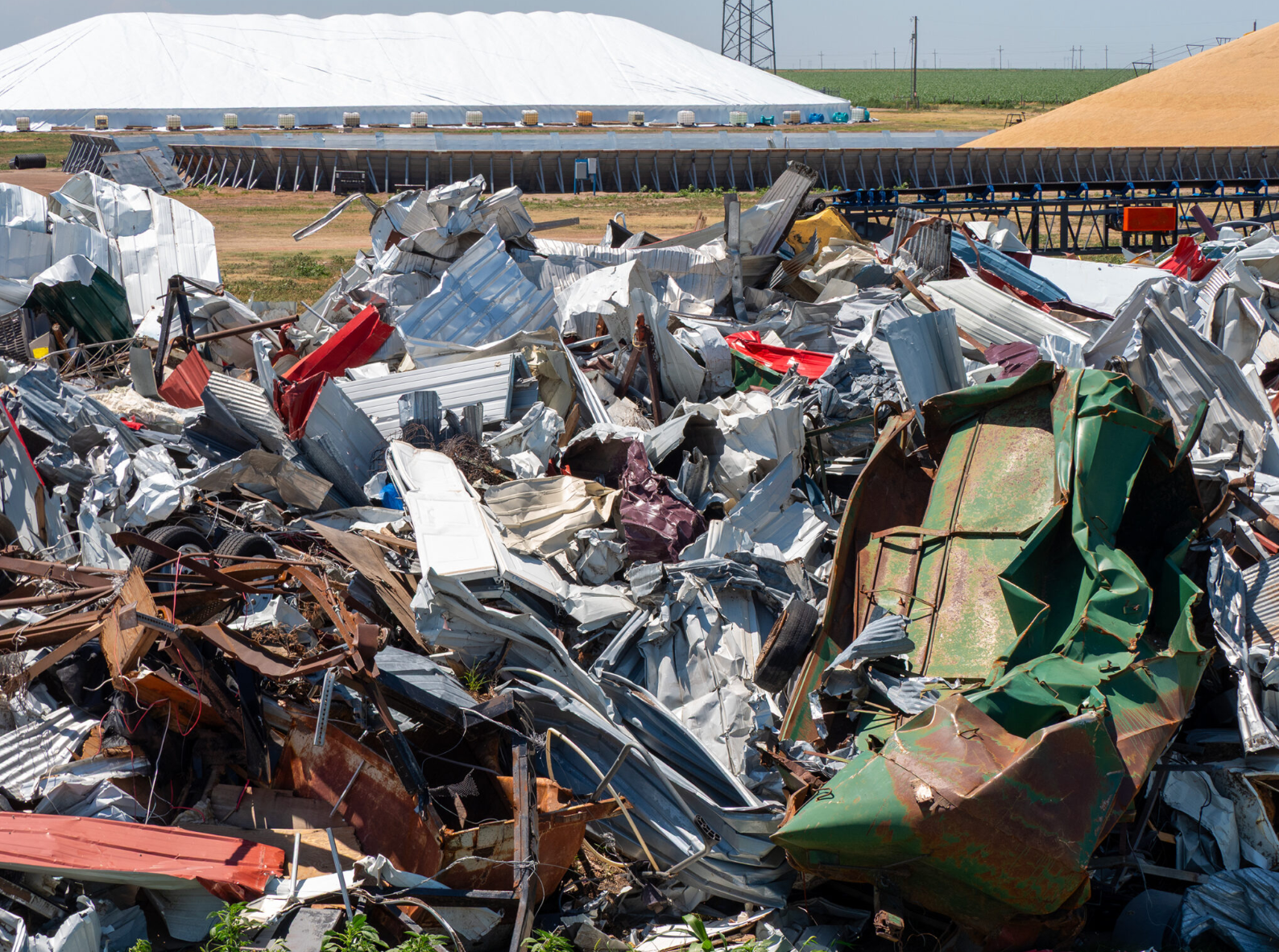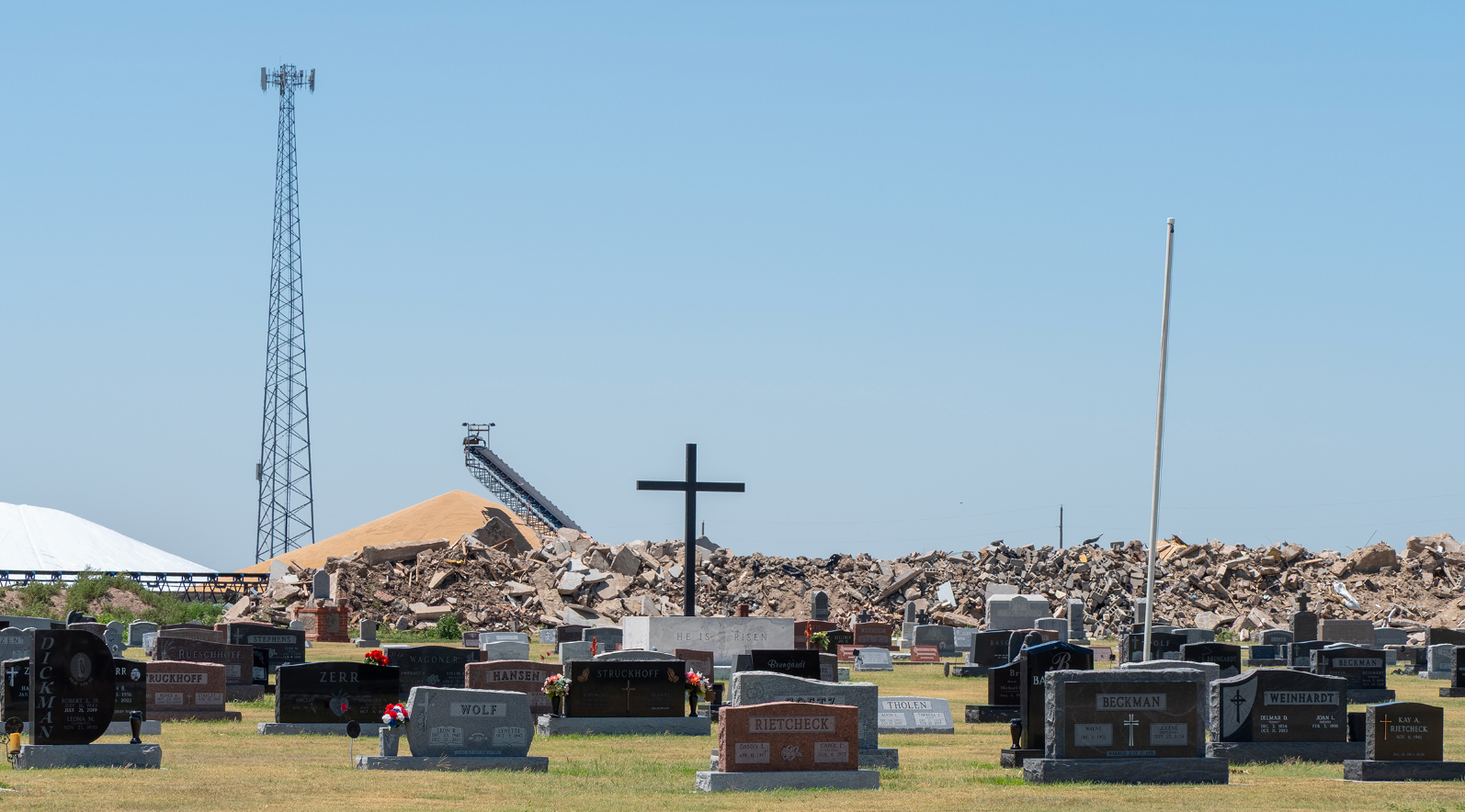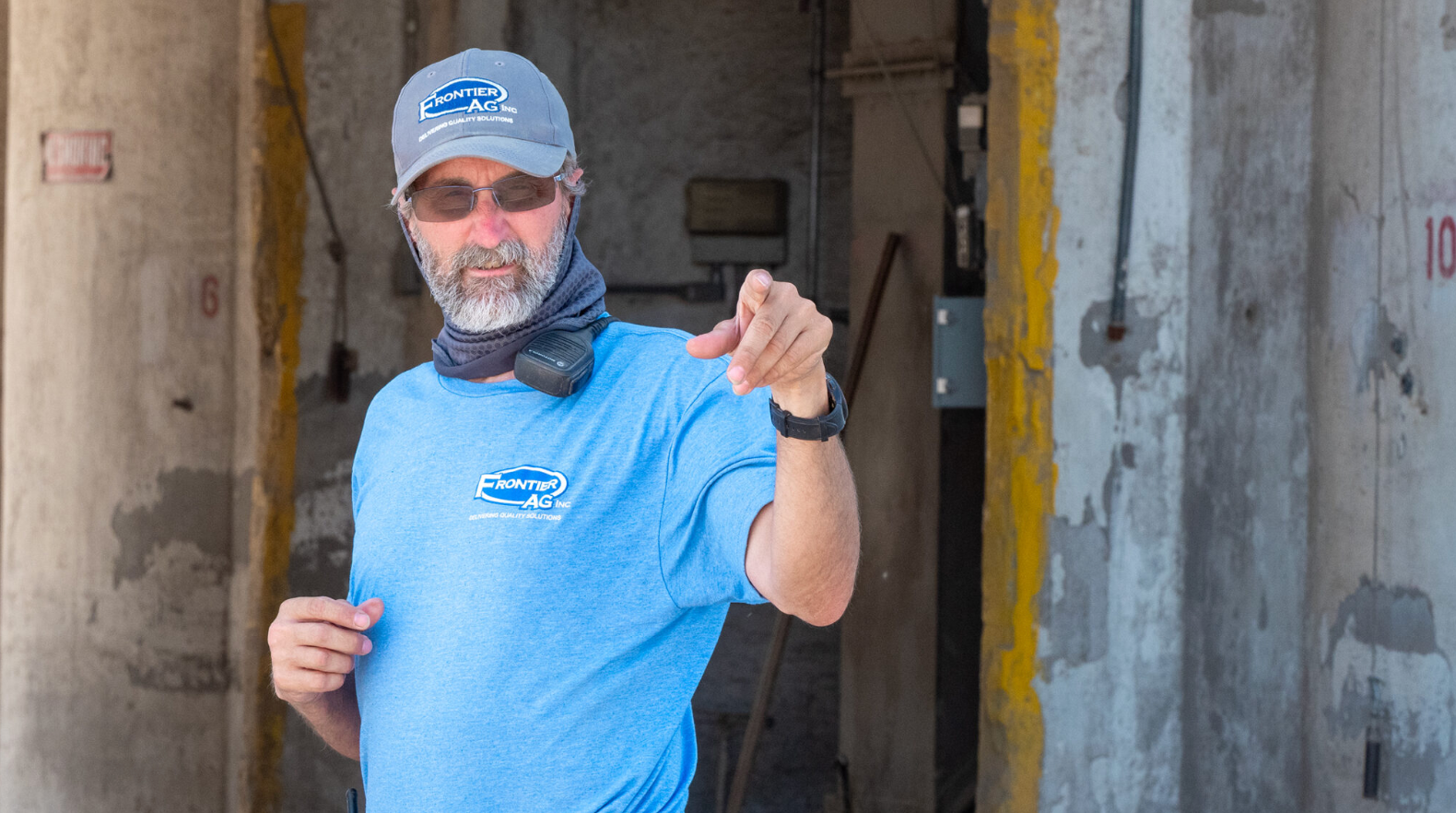
BY: MORGAN CHILSON
Kansas Reflector
GRINNELL — “Everything’s gone.”
Grinnell City Administrator Jewel Maier is visibly shaken weeks later when she repeats the words her best friend said minutes after a tornado struck this western Kansas town.
“She called me, and the first question out of her mouth was ‘Are you OK?’ I immediately start complaining about my patio table that got flipped over and just demolished,” Maier said. “Then she kind of choked up and she said, ‘Everything’s gone.’ ”
It was the moment Maier, who lives on a farm south of town, understood the devastation wreaked on her friends and neighbors in Grinnell.
On May 18, an EF-3 tornado swept into the small town of just over 240 people around 6:30 p.m., leveling a west-side neighborhood with more than 28 houses and outbuildings. The elementary school and a city-owned golf course were damaged, along with a Frontier Ag grain facility.

The National Weather Service reported 13 tornadoes that day in Kansas, six of them rated EF-3, which means winds 136 to 175 mph.
The destruction runs to millions of dollars. But Maier and Grinnell residents tend to focus on the lack of injuries in the stories they tell.
“There were a couple of people who just got beat up,” said Tristan Bixenman, a restaurant owner in nearby Grainfield whose family all lives in the area. “But nobody got seriously injured.”
Kansas resilience
Bixenman had been closely watching the weather and canceled a planned family dinner in town when the sky darkened.
“My parents were not very smart, and they were checking ground and happened to come up behind it,” she said, shooting a look at her mother, Christy Rathgeber, who just smiled.

“I was calling them and warning them to go to the basement, because they were in the path of it,” Rathgeber said.
She said she and her husband didn’t realize the storm’s strength until they turned a corner and saw power poles collapsing on the road in front of them.
“That’s when we stopped and backed up,” she said. “There’s so much debris. My husband barely rolled the window down, and it sucked the hat off his head. We’ll never see that hat again.”
Once she realized the tornado was heading to Grinnell, Rathgeber said she contacted family members in the path.
“We called them, and they had no intentions of going to the basement,” she said. “They didn’t think it was anything. Had we not called, I don’t know as if they would have gone to the basement in their house.
“Their house was demolished, but the china hutch was still sitting, and there were still dishes in it,” Rathgeber added.
Kenny Robben also lost his home. In his 80s, Robben had knee surgery and was sitting in his recliner, Bixenman said.
“Sirens are going off, (Robben was) watching the news. Wasn’t too concerned until the last second,” she said. “He stands up with his walker and then the wind just starts coming through his windows. He sits down and literally rides it out in his recliner.”
Bixenman shook her head. Robben was uninjured.
Rallying to rebuild
The list of work to be done is long. The local Catholic church lost its roof. Headstones were damaged at the VFW cemetery. The elementary school won’t reopen in time for the start of school.

Contractors are difficult to find, Maier said, but are filtering in to do the work.
A missionary team from the First Baptist Church in Dighton arrived July 21 and framed and sided a house in five days, said the Rev. Ken Bowden.
“We just asked if there was anybody we could help out specifically, and the city nominated one of the families in town to get their house rebuilt,” he said.
The church team of 20 included a contractor, who helped teach the others, Bowden said. They put walls up the first day, trusses the second and then finished decking it.
The town found a contractor to work on the elementary school, but all classes there are being moved to the middle school when the session starts Aug. 13, Maier said.
“We’re such a small school, so they’re just going to move some things around and make everybody fit for the year,” she said. “And God bless our lunch lady. She’s going to make the lunches and then hot box them down the street — they have a hot box on wheels — so they get breakfast and lunch. Prior to this, the middle schoolers would come down to eat lunch at the grade school.
“It’s been amazing to see the backbone of people,” Maier added. “Grinnell has some true grit in us. I’m so proud of our little town.”
On July 23, President Donald Trump approved disaster funding for Grinnell and Gove County, along with other Kansas counties affected by the May 18 and 19 storm. Public assistance funding is a cost-sharing federal program to pay for emergency work and repair and replace facilities damaged by storms, said Ryan Lowry-Lee, FEMA Region 7 spokesman.
The assistance will pay for debris removal and emergency protective measures, as well as permanent restoration of facilities such as roads, culverts, bridges and public buildings, he said.
“It’s been a very steep learning curve of what do you do to keep a town safe,” Maier said. “We have two paved roads in town, and everything else is sand road. We might have to dig up these roads, pull up to four inches off them and re-sand them, for safety reasons. Your kids can’t ride a bike if they’re full of nails.”
Maier, who worked in the insurance industry for 13 years, worried the town wouldn’t qualify for support because it had to show $5.8 million of damage to city-owned property. But state and FEMA staff helped her assess damages, and they made the threshold.
Along with damages to the school and the golf course, Maier said 40 water meter pits were damaged or completely gone, costing $1,000 to $1,500 each to replace.
A separate city insurance policy doesn’t cover roads and major infrastructure, and Maier didn’t expect to make the $10,000 deductible.
Meanwhile, the Grinnell grain facility owned by Frontier Ag will take about $6 million to rebuild, said CEO Stan Remington. They have insurance of $3.5 million to $4 million, he added.
“We lost approximately 750,000 bushels of storage,” he said. “We’ll be lucky to be in operation a year from now. Contractors aren’t easy to find, and it takes time to build that kind of complex back.”
Remington said his company’s other facilities are too far away to be of use for the upcoming fall harvest. The storm damaged storage bins full of grain and forced the company to store wheat under white tents on the ground, a practice they’ll continue. But that drives costs up.

“Labor costs go up because it takes about two times the labor to put it on the ground,” he said.
Darrell Garner, a grain elevator supervisor at the facility, said they were shut down for about four days after the storm, but welders have been coming in to remove broken metal and make repairs.
“We’re doing pretty good,” he said.
So much help
While some residents are rebuilding their houses, others have chosen to sell their lots instead, Maier said.
“I think it’s going to change us forever,” said Lisa Bixenman, a Grinnell resident and a cousin of Tristan Bixenman. “I don’t think a lot of them are going to build back, maybe we’re up to half. I just don’t think it’s ever going to be the same.”
Dolly Theobald’s family chose not to rebuild, but they didn’t leave town. Instead, a local woman offered to sell them her home, and they moved in last week.
The night of the storm, Theobald had just gotten home when her sister-in-law messaged to ask if they were in the basement. After a second call from her mother, Theobald said she gathered her two children and the pets and went to the basement.
“It was crazy loud, and it was probably done in less than 30 seconds,” Theobald said. “You could hear the windows breaking. You could hear debris hit.”
Their house was a total loss. Theobald said she’s grateful her family photos were in a center room in the basement, where they were safe.
Pieces of family history were scattered throughout the area, hung up in trees, and wrapped around jagged edges of aluminum siding. The town set up three tables at the VFW where people put things they found so they could be returned to owners, Rathgeber said.
Concern from small communities poured in through financial donations, boots on the ground, offers of an apartment complex to house people short term and hotels donating free rooms, Maier said.
Volunteers arrived by the hundreds. The day after the tornado, an estimated 1,500 to 1,800 people arrived to clean up, said Grinnell resident Shari Burks.
“Farmers were all supposed to be planting, and they just parked their tractors for a week,” Lisa Bixenman said. “Or they brought them to town to help. I mean, literally it put everybody behind for a week or a week and a half, because they all just dropped everything to come. It’s incredible.”
The VFW, initially the hub of emergency activity and a storm shelter, transitioned to a community center for meals, organizing volunteers, collecting donations and bringing everyone together.
Volunteer Melissa Shupe said donations quickly came from across the country. A semi-truck of new clothing was delivered. People who had been through the Joplin, Missouri, tornado drove in with supplies. Rathgeber, who owns Broken Handle catering, and Tristan Bixenman, who owns Meraki Market, both served dinners.
Nearby restaurants donated hundreds of pizzas and sandwiches, Pepsi donated 400-plus cases of Gatorade and soda, and other companies donated chips and pallets of water, Tristan Bixenman said.
“It was an overwhelming blessing type of thing,” she said. “It can be really challenging to keep all that organized in the aftermath of a disaster. It just kept coming in.”

Long-term recovery
Trish Gruber, Grinnell’s emergency operations manager, said short-term recovery after the storm is over. That included checking for injuries, removing debris and reporting what had happened to appropriate agencies, including utility companies that moved in to clean up downed power lines, she said.
Gruber also had to address the tornado siren in town that didn’t go off that night.
The two sirens were tested about 30 minutes before the storm in a regularly scheduled test that occurs every day at noon and 6 p.m., she said.
“It was just when we tried to set it off manually, it was not catching that signal,” Gruber said.
The working siren was located on the west side of town where the tornado hit, Gruber said, adding that emergency vehicles drove through town with their sirens screaming to warn residents.
Today, the siren is fixed, and the long-term recovery, expected to take two years, is underway.
Gruber said the city has applied for a grant to update its tornado shelter. Maier is looking at other grants to help homeowners and the city rebuild.
Sitting on a bench downtown, she is hopeful for Grinnell’s future.
“It all came together so fast and really, so smoothly,” Maier said of the recovery. “We had an amazing group of people that really stepped up to the plate. As overwhelming as it was, it was a lot of love.”






